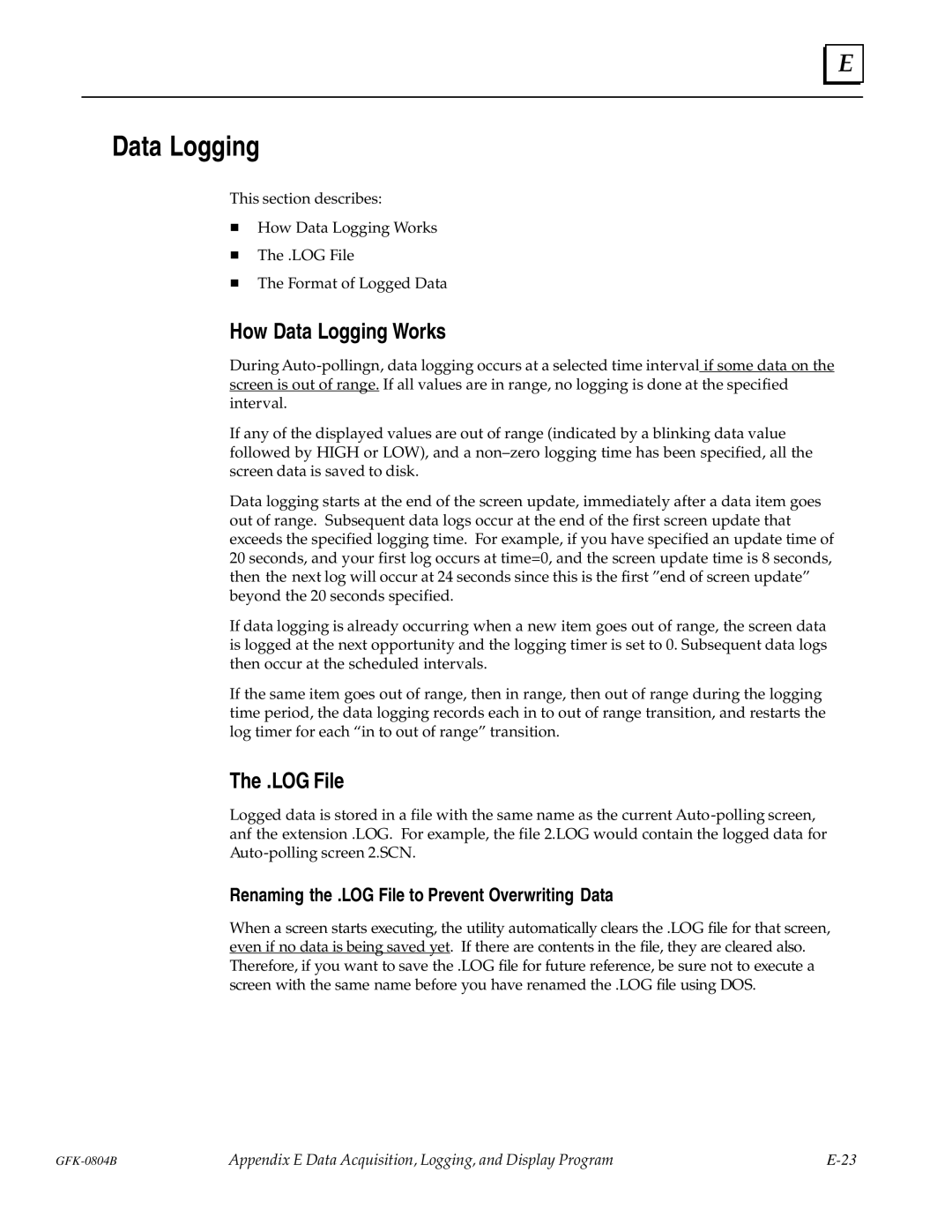
E |
Data Logging
This section describes:
HHow Data Logging Works
HThe .LOG File
HThe Format of Logged Data
How Data Logging Works
During
If any of the displayed values are out of range (indicated by a blinking data value followed by HIGH or LOW), and a non±zero logging time has been specified, all the screen data is saved to disk.
Data logging starts at the end of the screen update, immediately after a data item goes out of range. Subsequent data logs occur at the end of the first screen update that exceeds the specified logging time. For example, if you have specified an update time of 20 seconds, and your first log occurs at time=0, and the screen update time is 8 seconds, then the next log will occur at 24 seconds since this is the first ºend of screen updateº beyond the 20 seconds specified.
If data logging is already occurring when a new item goes out of range, the screen data is logged at the next opportunity and the logging timer is set to 0. Subsequent data logs then occur at the scheduled intervals.
If the same item goes out of range, then in range, then out of range during the logging time period, the data logging records each in to out of range transition, and restarts the log timer for each ªin to out of rangeº transition.
The .LOG File
Logged data is stored in a file with the same name as the current
Renaming the .LOG File to Prevent Overwriting Data
When a screen starts executing, the utility automatically clears the .LOG file for that screen, even if no data is being saved yet. If there are contents in the file, they are cleared also. Therefore, if you want to save the .LOG file for future reference, be sure not to execute a screen with the same name before you have renamed the .LOG file using DOS.
Appendix E Data Acquisition, Logging, and Display Program |
